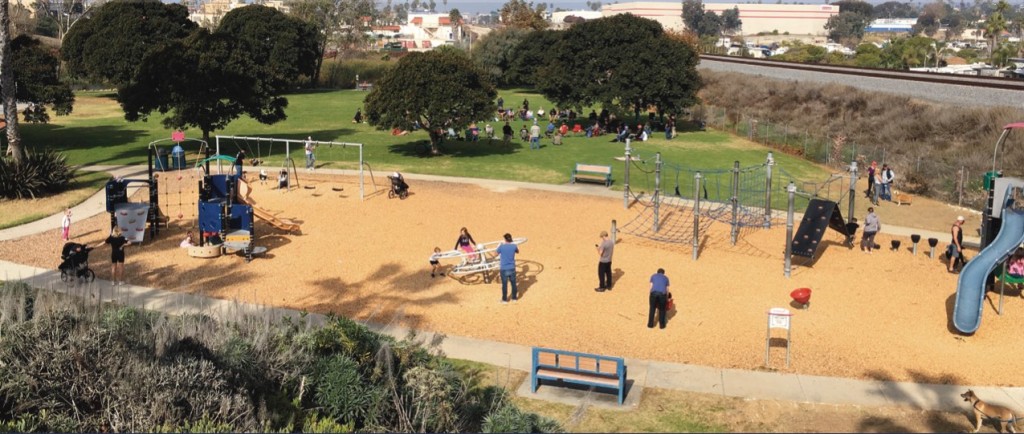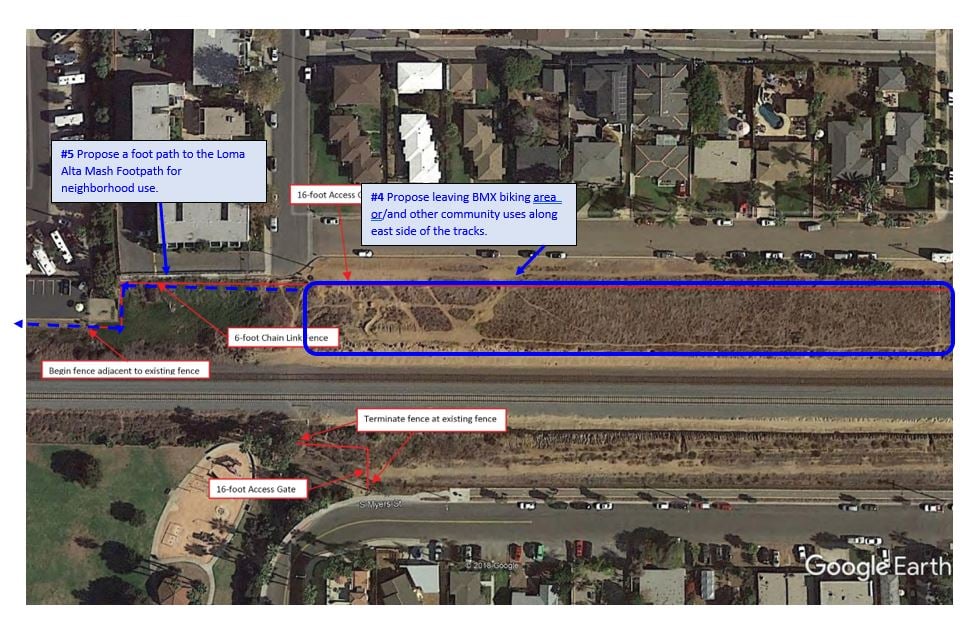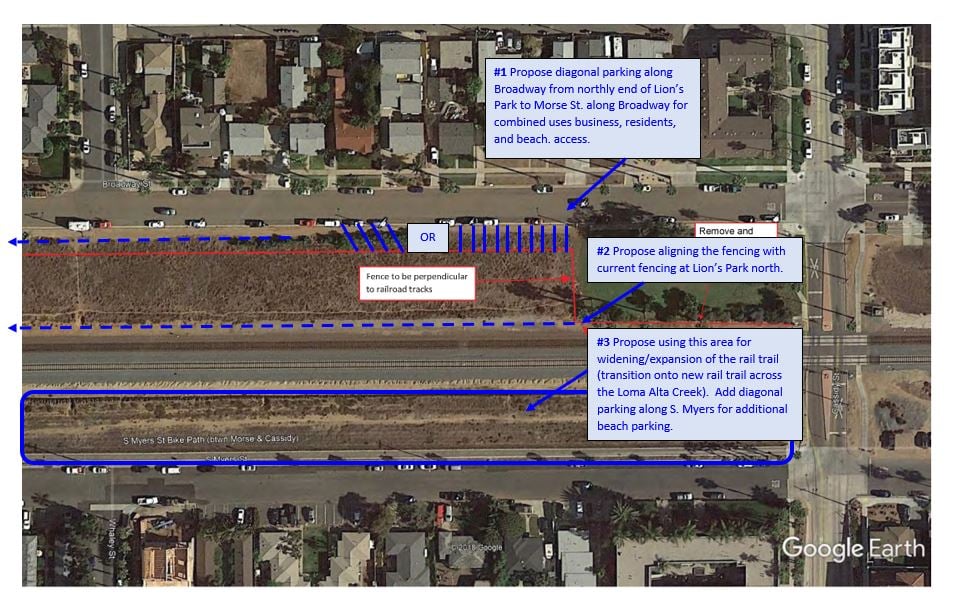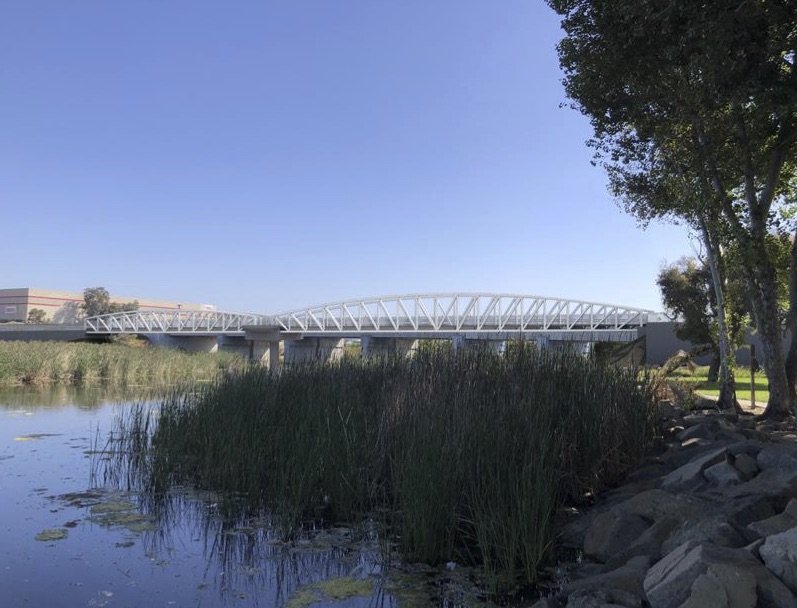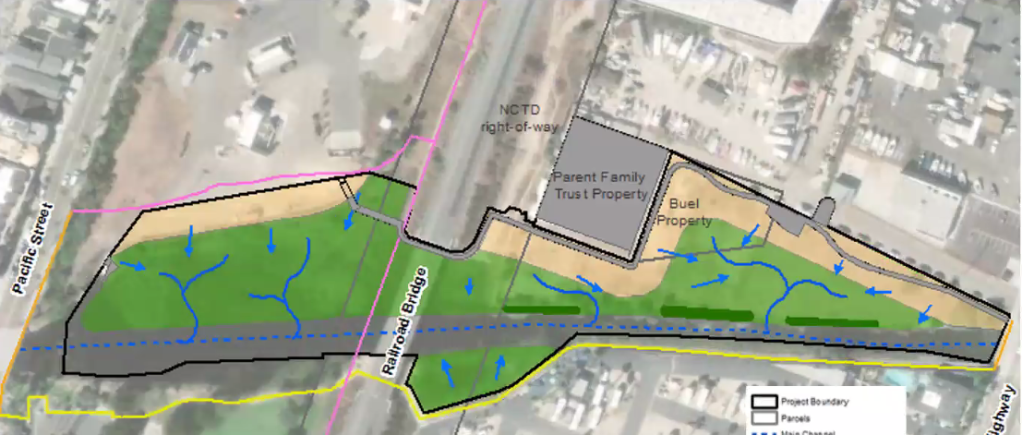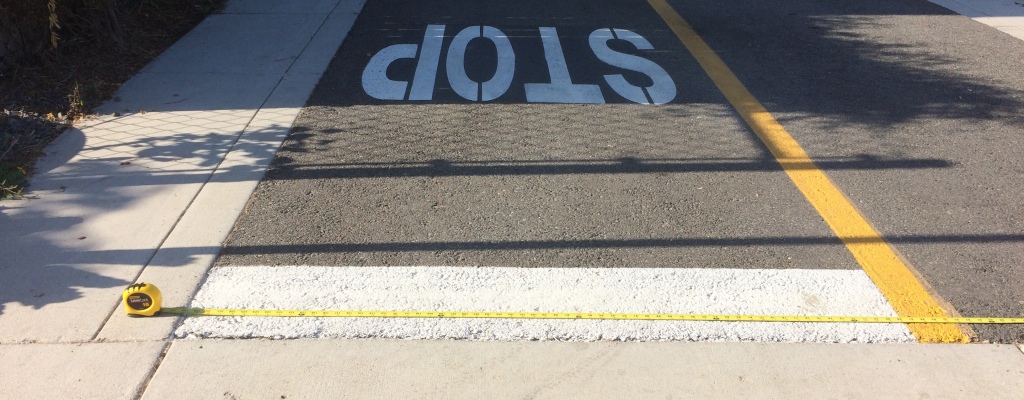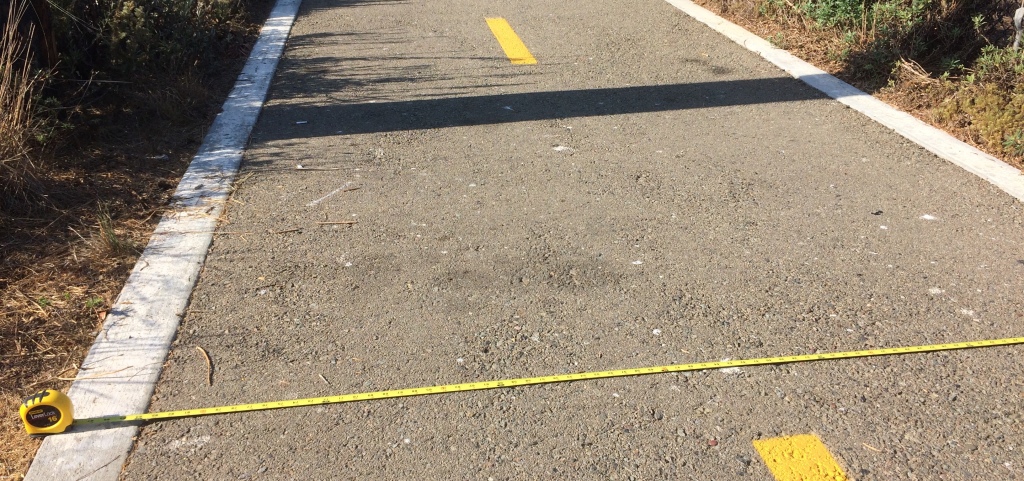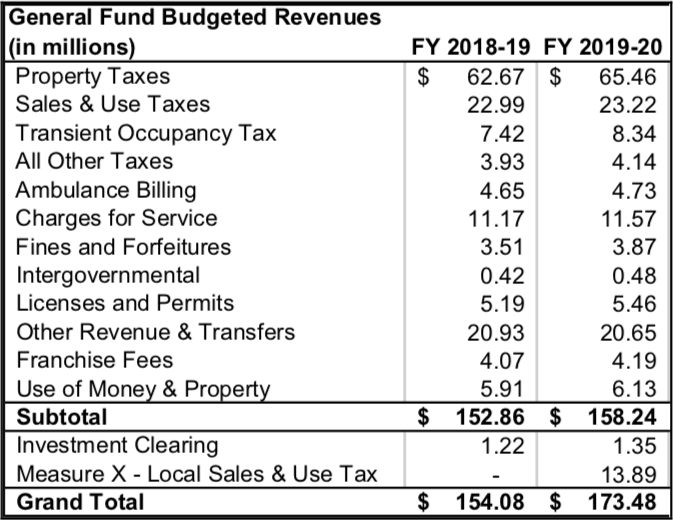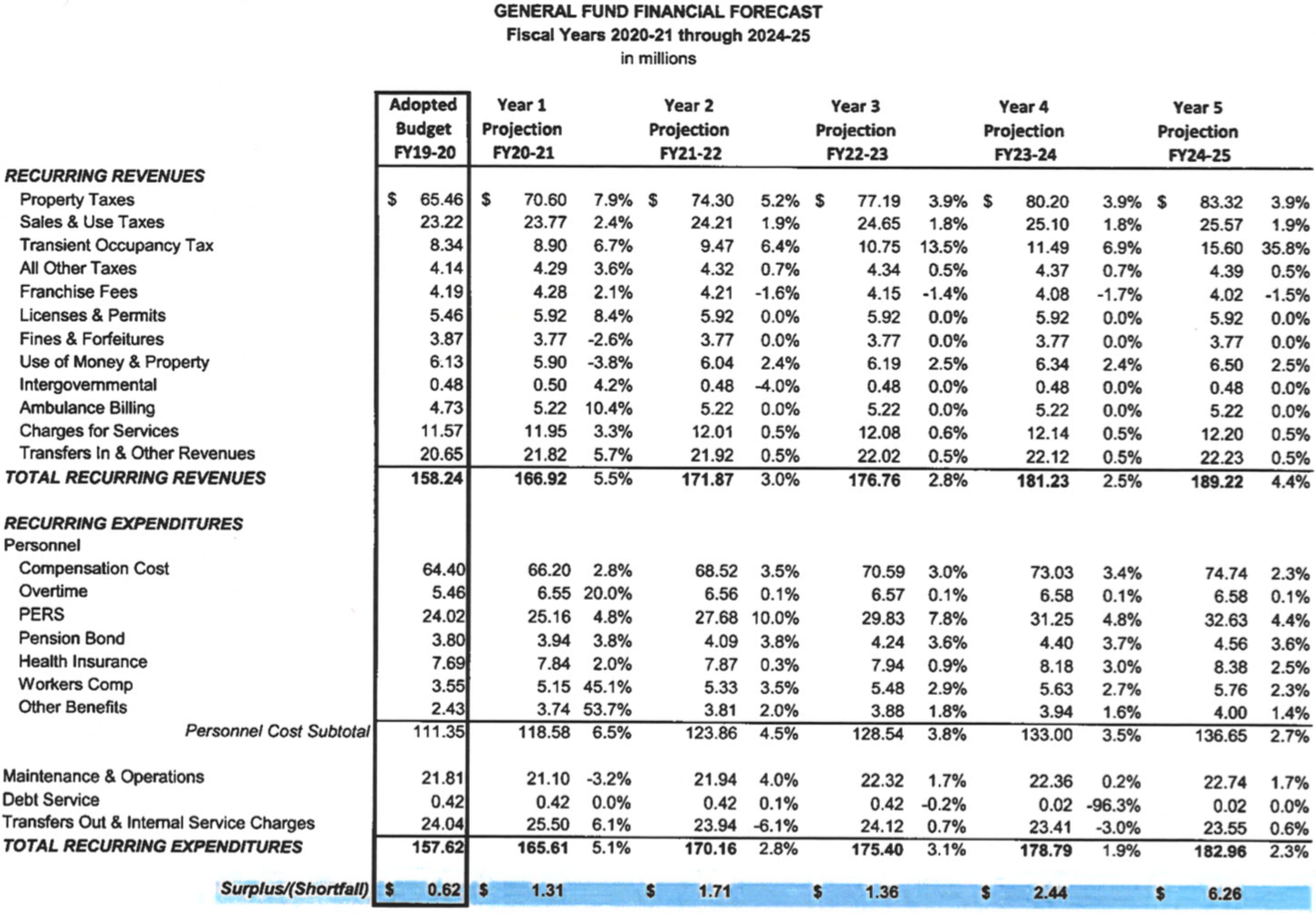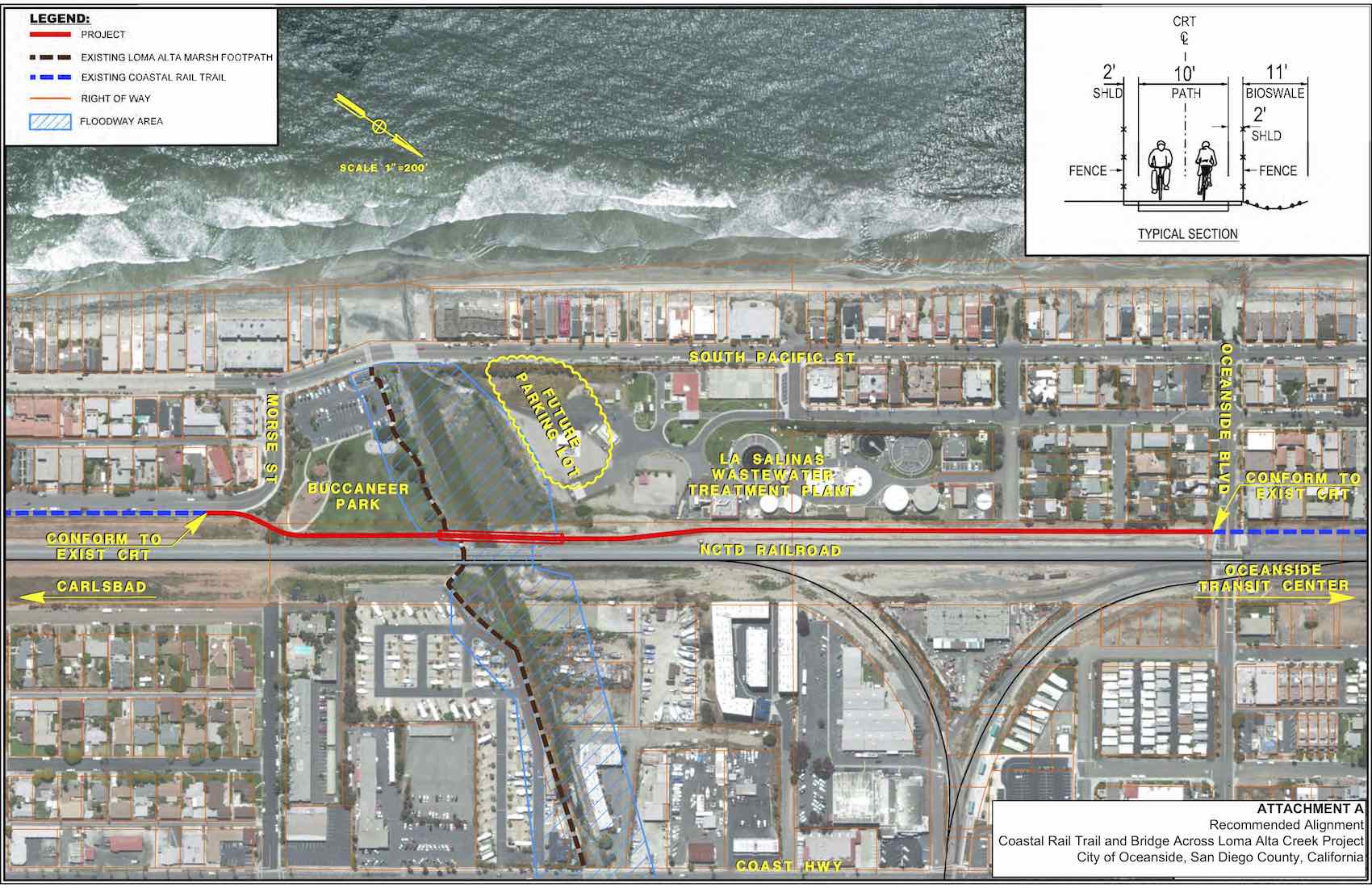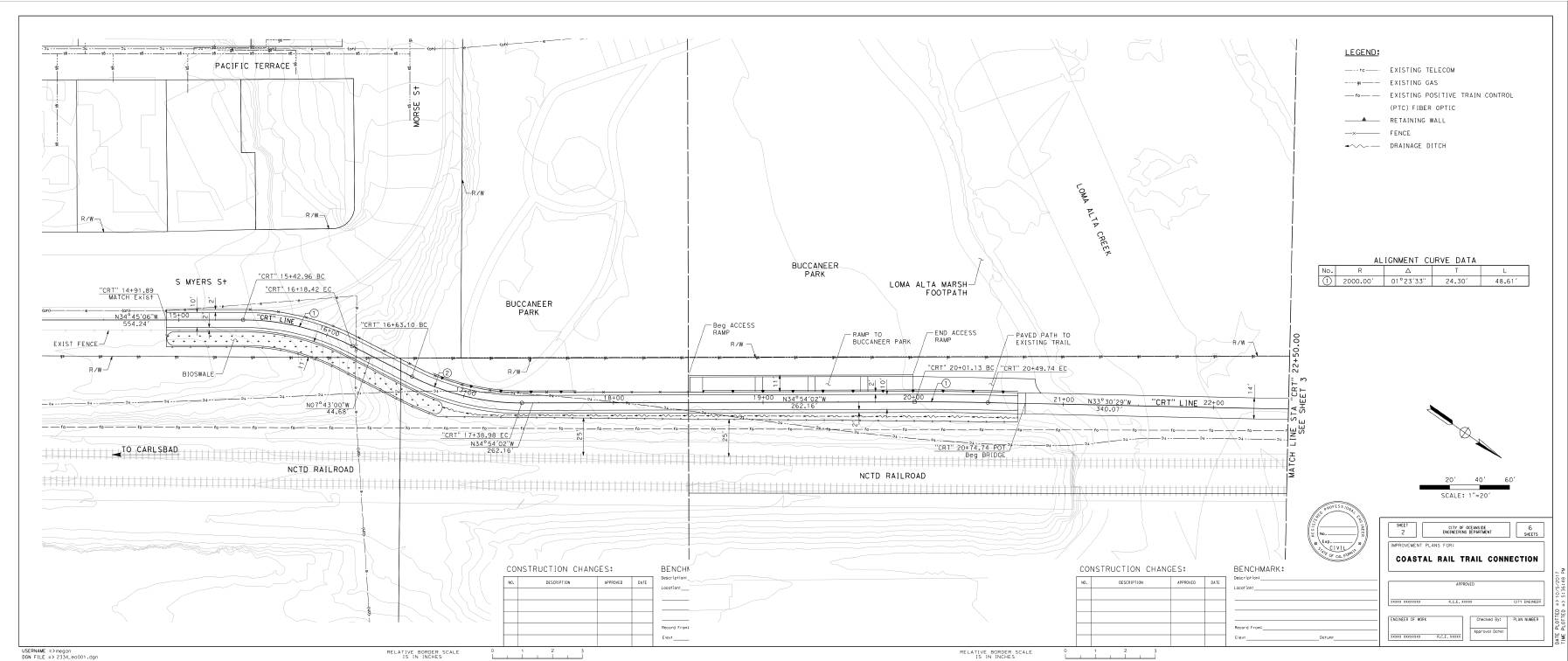As reported earlier, the city is working to finish the Coastal Rail Trail from Oceanside Blvd. to the southern city limits at Buena Vista Lagoon. The public hearings have been held on the northern leg — stretch from Oceanside to Buccaneer — and the city is completing the engineering design as it (continues to) seeks state funding to pay for the trail and the bridge over Loma Alta Creek.
Meanwhile, this summer the city started the process to upgrade the original trail segment — Morse south to the city limits — to widen it and make it more suitable for cyclists and sharing between pedestrians and cyclists. The city created a Technical Advisory Committee with representatives fvarious staff representatives, and two residents: cyclist Tom Lichterman (chair of the Oceanside Bicycle and Pedestrian Committee) and South O resident Joel West.
Led by the consultants from Alta, the TAC held its first meeting July 19 and its second meeting on Wednesday. The slides from the consultants’ presentation are the bottom of this story.
For the past three months, the city has solicited public input, as the consultants identify alternatives and evaluate their feasibility. The goal is to hold additional hearings next spring and use that to recommend a specific option for council approval.
Public Input
The city ran a public survey with 343 responses so far; 65% were from the 92054 zip code (with an unknown fraction in South O). If you have not completed it, the survey (http://bit.ly/OceansideCRT) will remain open until spring 2024. The city and its consultants also had four public meetings that attracted 290 people:
- Aug 7: A public hearing at city hall
- June 15: at Sunset Market
- July 1: at Mace Buchanan Park
- Aug 19: at Buccaneer Park
Although the audiences were different, these public outreach events identified several common concerns: safety, lighting, shade, attractive landscaping.
Design Goals
The goal of building the rail trail is to allow and encourage more pedestrians and cyclists to use this Class I trail — to downtown, to South O, and to connect to the eastbound San Luis Rey River Trail on the north and the CRT through Carlsbad (someday) south to San Diego. The trail may not be suitable for the most serious cyclists (such as the bike clubs), but the hope is to attract pedestrians and casual cyclists who find the existing streets too intimidating. This would include both residents and visitors to Oceanside who want to explore the city.
The overall design goals are
- Replace existing 7-8′ wide path with a wider path that allows for simultaneous use by pedestrians and cyclists
- Design consistent with the newer stretches of the CRT, which call for a 10′ wide trail, with a 3′ paved shoulder on each side, and (where possible) a landscaping buffer on one side.
- Connect at the north to the new segment of the CRT at the south end of the bridge crossing the Loma Alta Creek, and at the south to the exit from the city on Coast Highway crossing Buena Vista Lagoon.
- ADA compliant paths (5% slope or less), both for wheelchairs and also for bicycle slopes.
Since the northern and southern terminus of this (upgraded) segment are decided, there are three major design choices:
- Since the northern terminus is west of the tracks on Myers and the southern terminus is east of the tracks on Broadway, where does the trail cross the railroad tracks?
- Connecting to an inland bike route at Morse Street
- How to connect Broadway to the existing trail on Coast Highway.
1. Crossing the Tracks
The consultants have identified four possible crossing points: with the existing Cassidy Street grade crossing (either on the north N2 or south N3 side of the street), or an overhead crossing near Whaley/Morse (N1) or near Eaton/Vista Way (S3). In the diagrams below, neither crossing location is exact, although for N1, the further north the crossing, the lower the rails are.

Because the tracks are more submerged north of Cassidy than south of Cassidy, a Whaley bridge would not have to be as high as one near Eaton. That would make it easier to construct the slope up to a northern crossing, and thus being less expensive than a southern crossing. An underground crossing near Eaton or Vista was ruled out.

2. Morse Street Connection
Based on a suggestion by the community representative at the July TAC meeting, the consultants are now investigating possible connections from Morse Street, to connect to both inland South O and the Safe Route to School path to Lincoln and Palmquist. Community representatives at the Aug. 19 meeting at Buccaneer Park also expressed strong interest in a solution to that issue.
The design of a Morse Street connection is at a very preliminary stage. However, with the N1 option, Morse Street pedestrians and cyclists might connect to the bridge on the Broadway side. Either way, Morse Street might use the underpass along the south shore of Loma Alta Creek.
3. Joining Coast Highway
While there are good paths along Coast Highway across Buena Vista Lagoon — northbound on the east side, and bidirectional on the west side — connecting these to the trail trail pose several dilemmas:
- Northbound traffic needs to turn left across Coast in front of Angelo’s. This problem exists today, and was identified by local residents at the Buccaneer Beach workshop.
- Cyclists need to get from Broadway (a relatively quiet street) out to Coast Highway. Eaton (which is quiet but skinny) is one option, and Vista Way (which is wide but busy) is likely the only other option.
The safest option would be to exit south on Broadway and then cut across south of the Eaton homes West to Coast. However, that land is now owned by the Audubon Society, which in recent community meetings made clear they are not willing to have their land lagoon used for a bike trail. The city and its consultants are no longer pursuing that option.
Future Public Meetings
The consultants will develop a more complete analysis of these alternatives for public hearings in spring 2024. This blog will provide community updates for future hearings.


